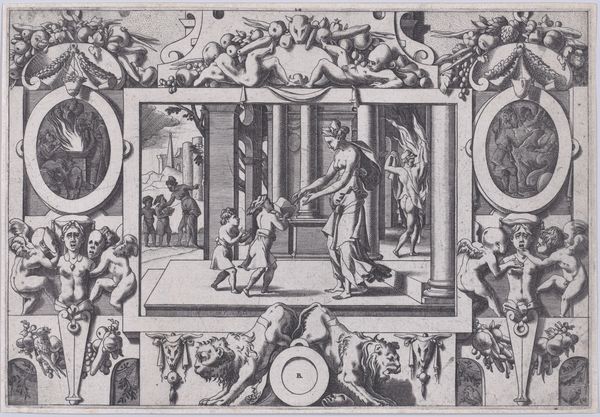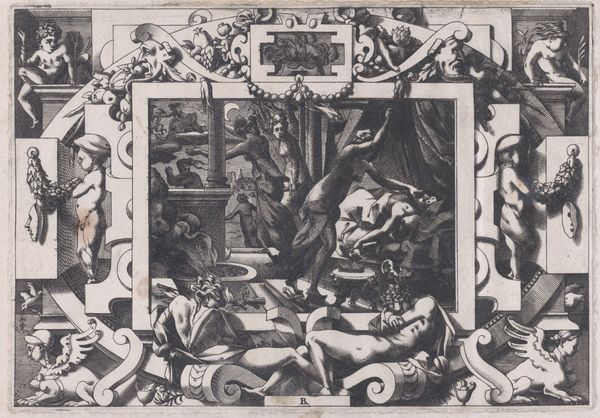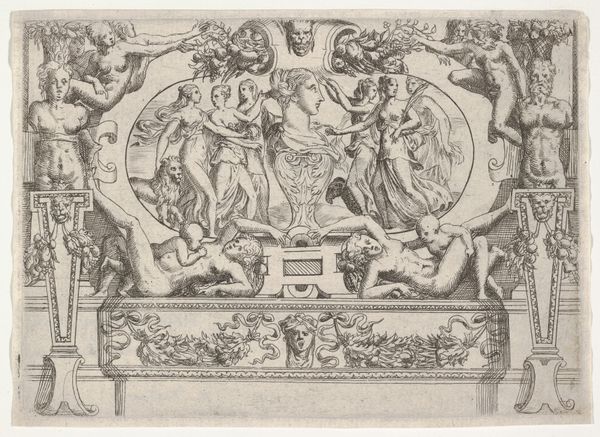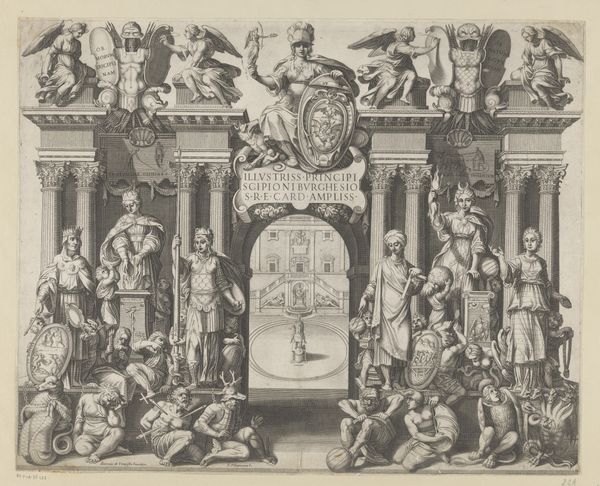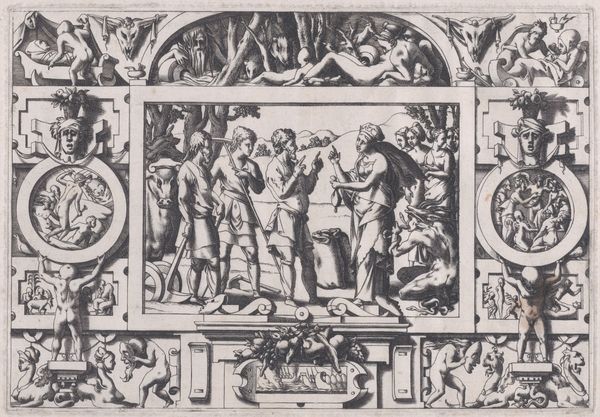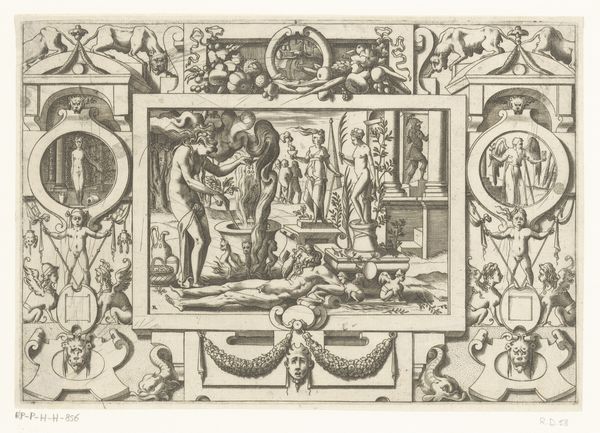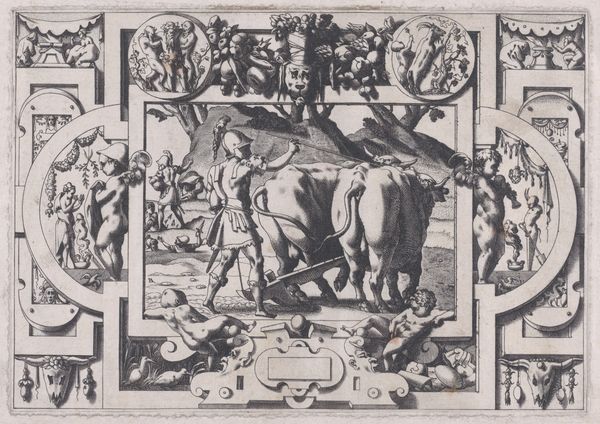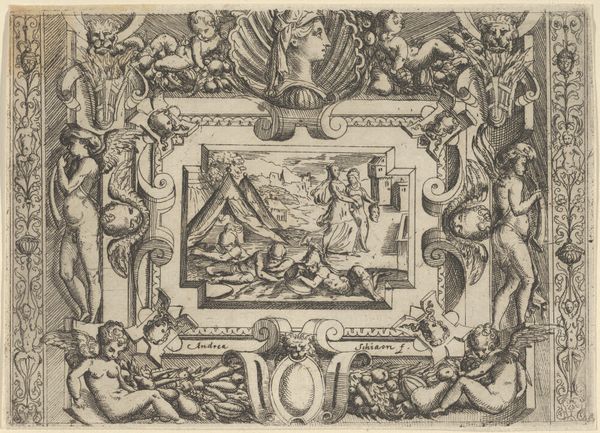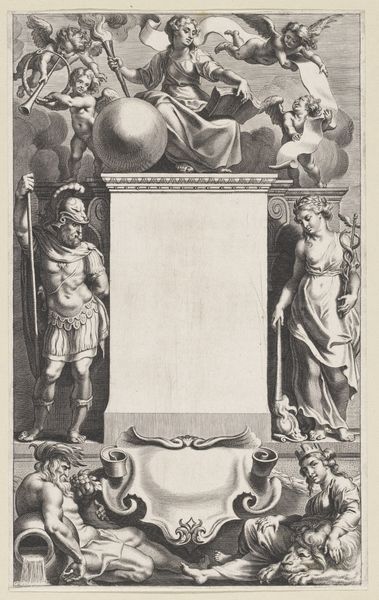
Medea Kills Her Two Children by Jason (Pour qui d'Absyrte a le sang repandu, fait que du sien le tort lui soit rendu...), from "Jason and the Golden Fleece" 1563
0:00
0:00
drawing, print, engraving
#
drawing
#
narrative-art
# print
#
mannerism
#
figuration
#
history-painting
#
engraving
Dimensions: Sheet: 6 5/16 × 9 3/8 in. (16 × 23.8 cm)
Copyright: Public Domain
Editor: This engraving, "Medea Kills Her Two Children by Jason" from "Jason and the Golden Fleece," was made in 1563 by René Boyvin. It's… intense. The scene is chaotic, almost unsettling. There's a lot going on in the composition itself. What do you see in terms of how this artwork speaks to its historical moment? Curator: Well, this piece resonates deeply with the social and political anxieties of the 16th century. Mannerism, the style in which it's rendered, favored artifice and emotional intensity. This aligns with the period's atmosphere of religious and political turmoil. What is really striking is that Boyvin chose a scene of infanticide. What kind of a statement do you think this is? Editor: I guess it challenges conventional views. Maybe it's trying to say something about the roles that people take, and what happens when those are stripped away? Curator: Exactly. Jason's abandonment of Medea becomes a societal mirror, reflecting anxieties about marriage, betrayal, and female agency in a patriarchal society. The composition itself – framed, theatrical – further emphasizes that this violence is meant to be seen, scrutinized. Its place in the context of printed images distributed to a broader public really heightens this message. It moves the domestic drama onto a broader stage, wouldn't you say? Editor: It’s really fascinating to consider this print as a political statement of the time! It reframes my understanding completely. Curator: Yes, paying attention to its public role allows us to move beyond just seeing this as a depiction of classical myth. What's been useful to remember is that historical reception adds crucial layers to our comprehension of the piece.
Comments
No comments
Be the first to comment and join the conversation on the ultimate creative platform.
